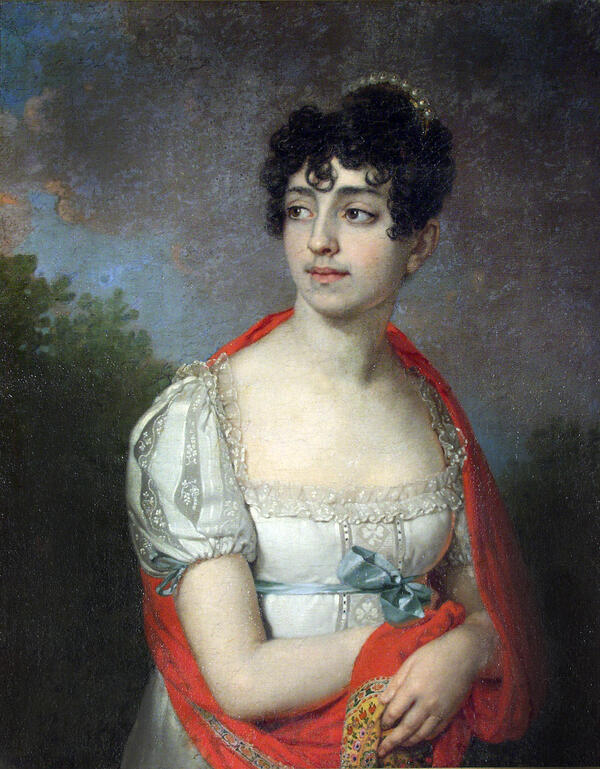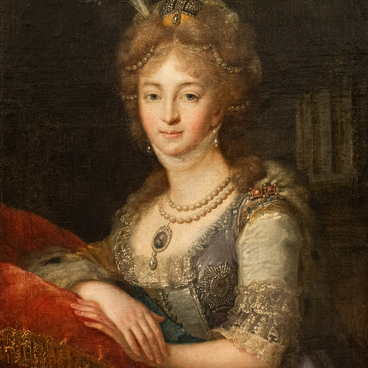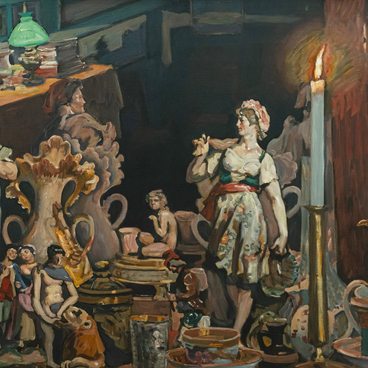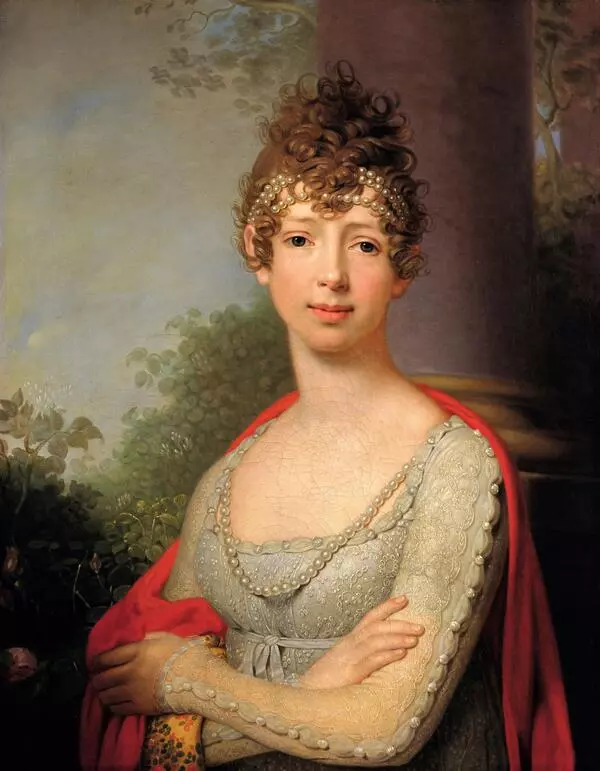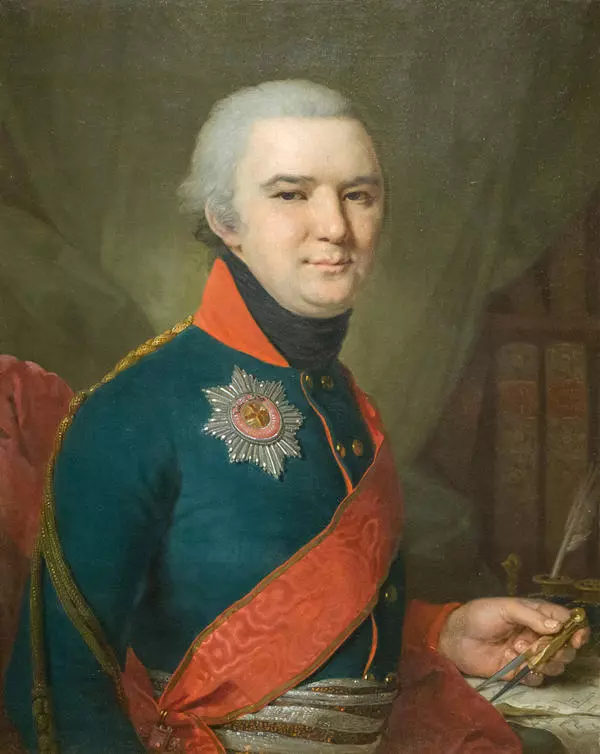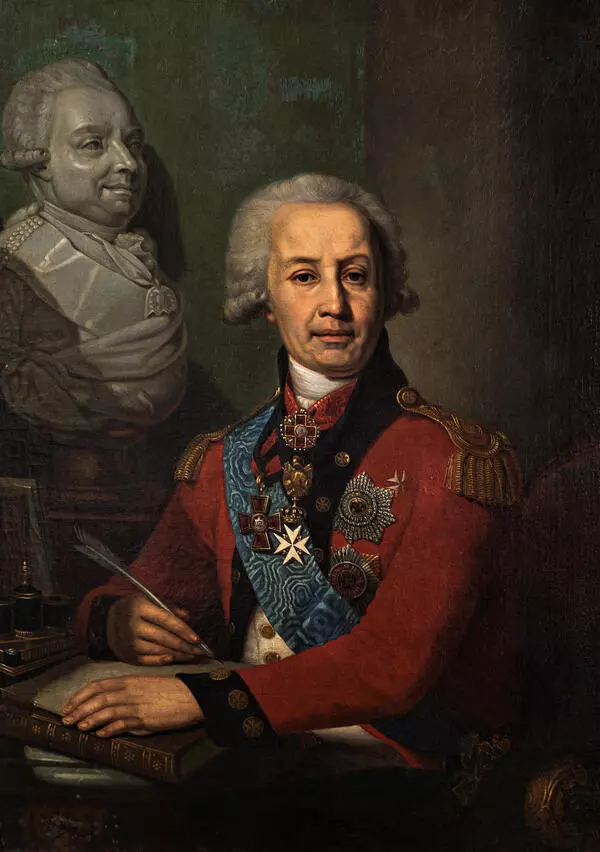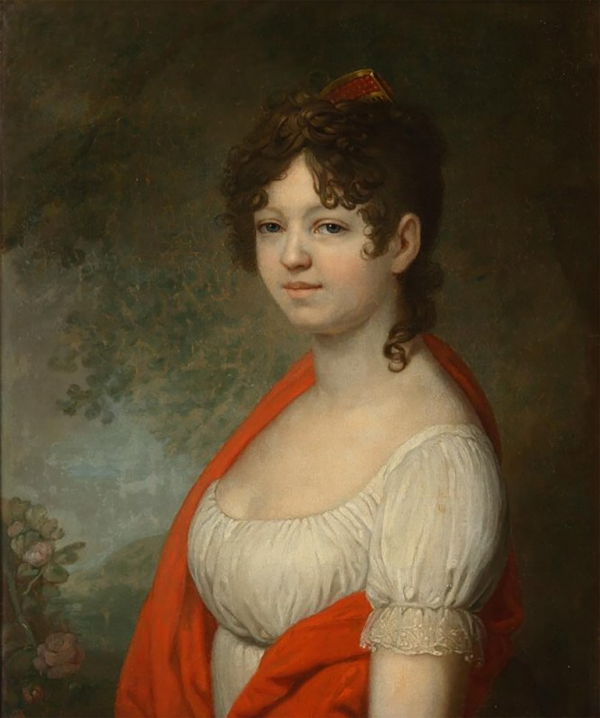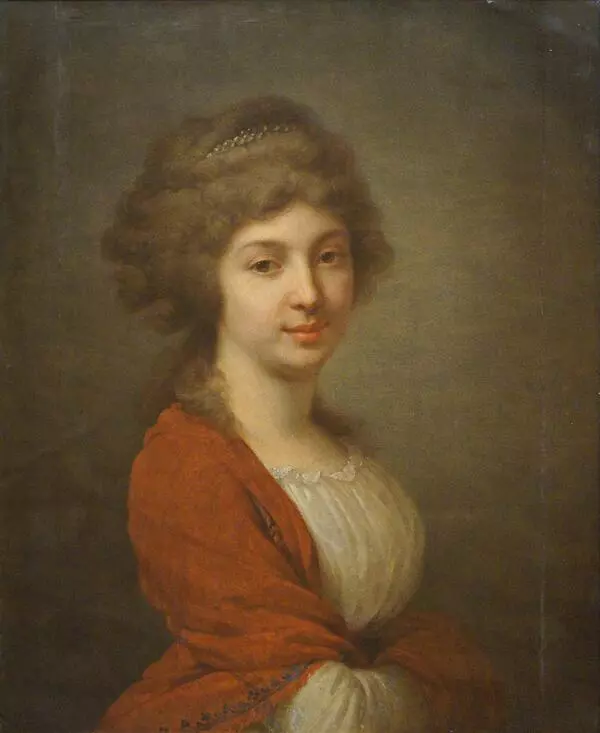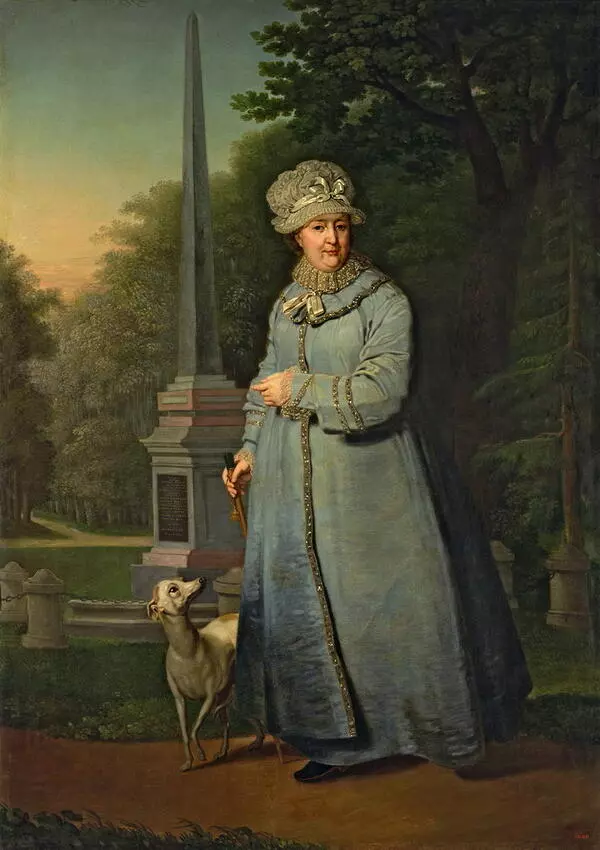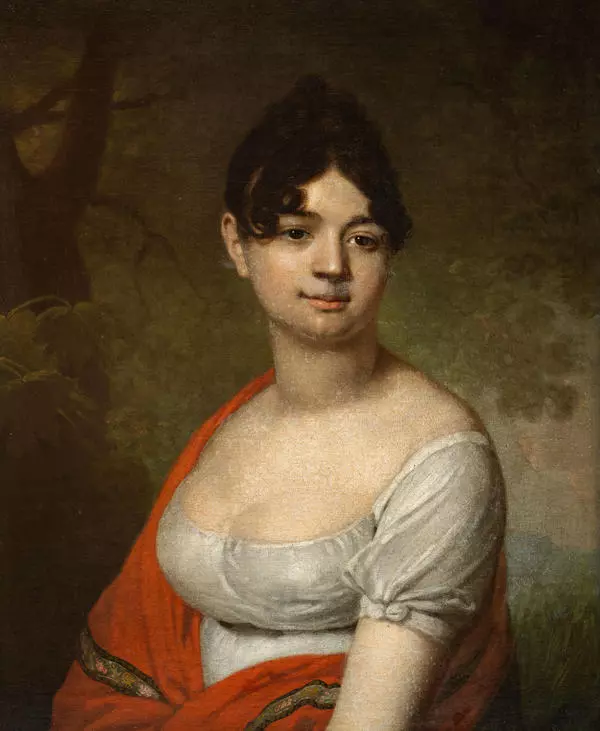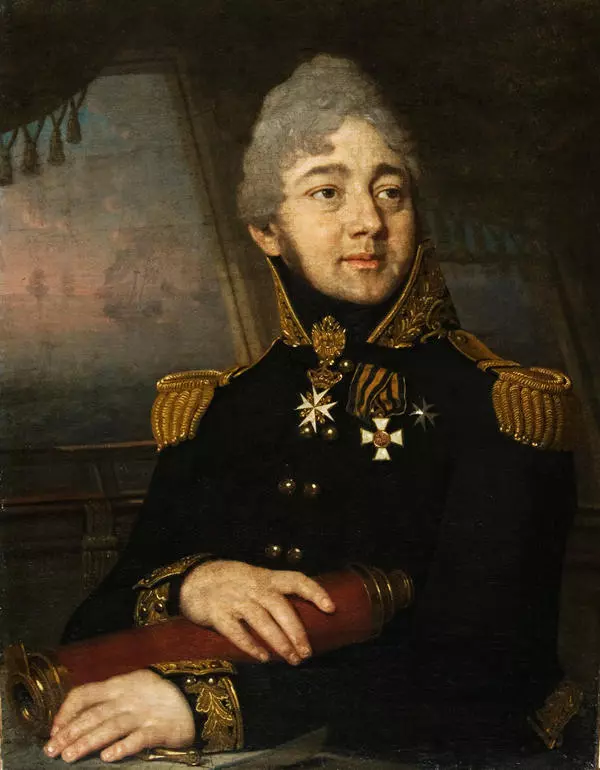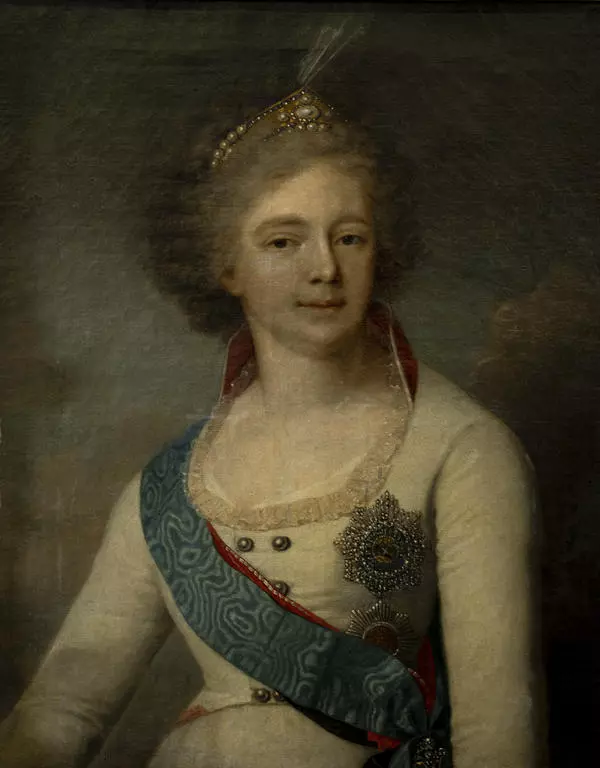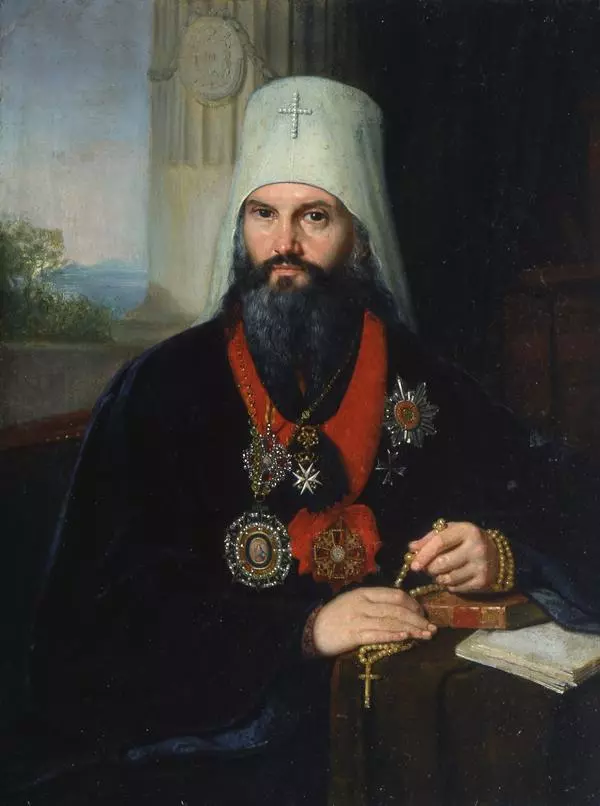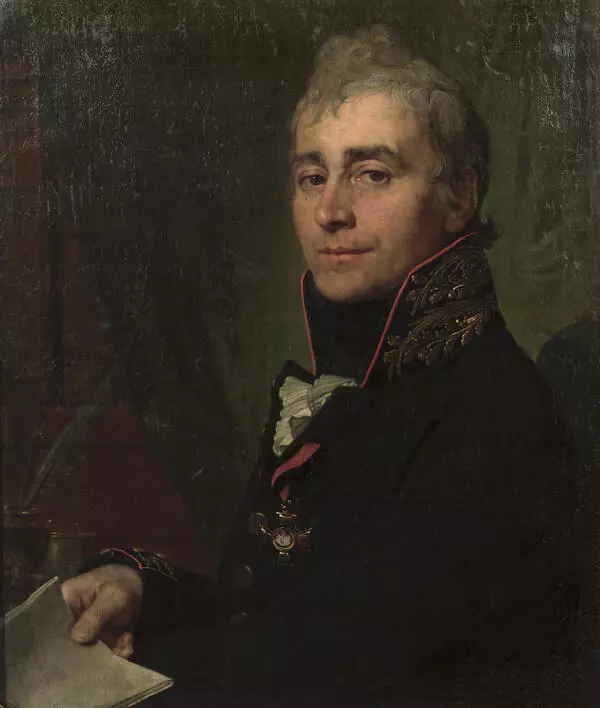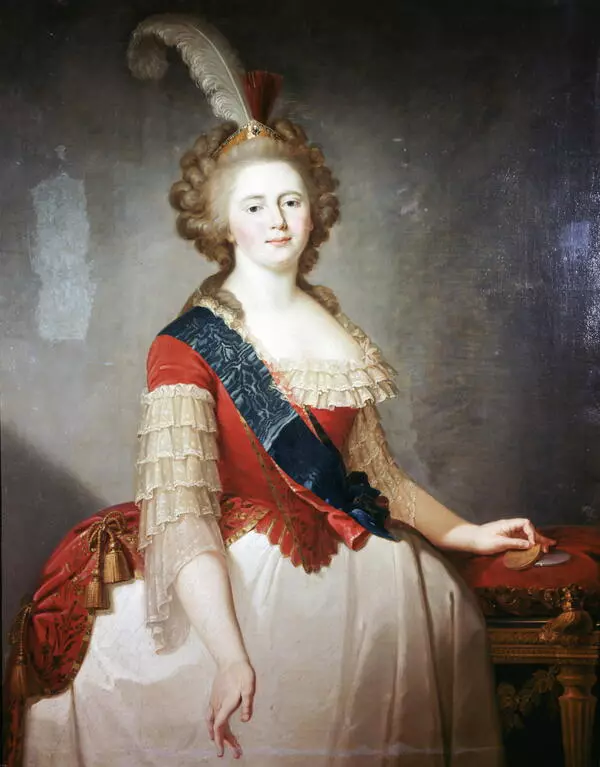Vladimir Lukich Borovikovsky was a portraitist. He was born in 1757 and received his early artistic training from his father who taught him icon painting. Being fascinated with art, Vladimir Borovikovsky did not continue his dynasty’s tradition of military service. He received commissions from Vasily Vasilyevich Kapnist, a famous poet and the leader of Kiev nobility. The artist designed the interior décor of rooms for receptions, including for the visit of Empress Catherine II in 1787. Soon, the Empress invited him to St. Petersburg.
Vladimir Borovikovsky studied painting under the guidance of Dmitry Grigoryevich Levitsky and Johann Baptist von Lampi.
The model is painted against the backdrop of a landscape. One of the key characteristics of this portrait is its simple composition. The portrait depicts Maria Feodorovna Baryatinskaya, a major Russian philanthropist who organized houses for widows and orphans.
Maria Baryatinskaya is shown against the background of a landscape. She is not supported by any object. Her hands are folded at her waist, which is covered by a scarlet shawl. She wears a dress that was fashionable in the early 19th century — this style originated in France. A shawl is draped over her left shoulder. This piece of clothing remained popular throughout the century, but the scarlet color reflects the taste of the early 19th century. The satin ribbon that ties the dress under her chest and the pearl tiara in a Greek hairstyle are typical of the 1800s and 1810s.
“Portrait of Maria Baryatinskaya” by Vladimir Borovikovsky has long attracted the attention of researchers. The date of its creation and the identity of the woman have been questioned. For a long time, it was thought that the portrait represented Princess Maria Feodorovna Baryatinskaya, née Keller. She was the second wife of Prince Ivan Ivanovich Baryatinsky, an Anglophile, a large landowner, and an agronomist. They got married in 1813, and the portrait was created in 1817.
However, after further research, it was suggested that the portrait actually depicted the prince’s first wife, Frances Mary Dutton, an Englishwoman. The woman’s image, the style of her dress, the scarlet cashmere shawl, and the hairstyle all indicate that the painting might have been painted in 1807.

